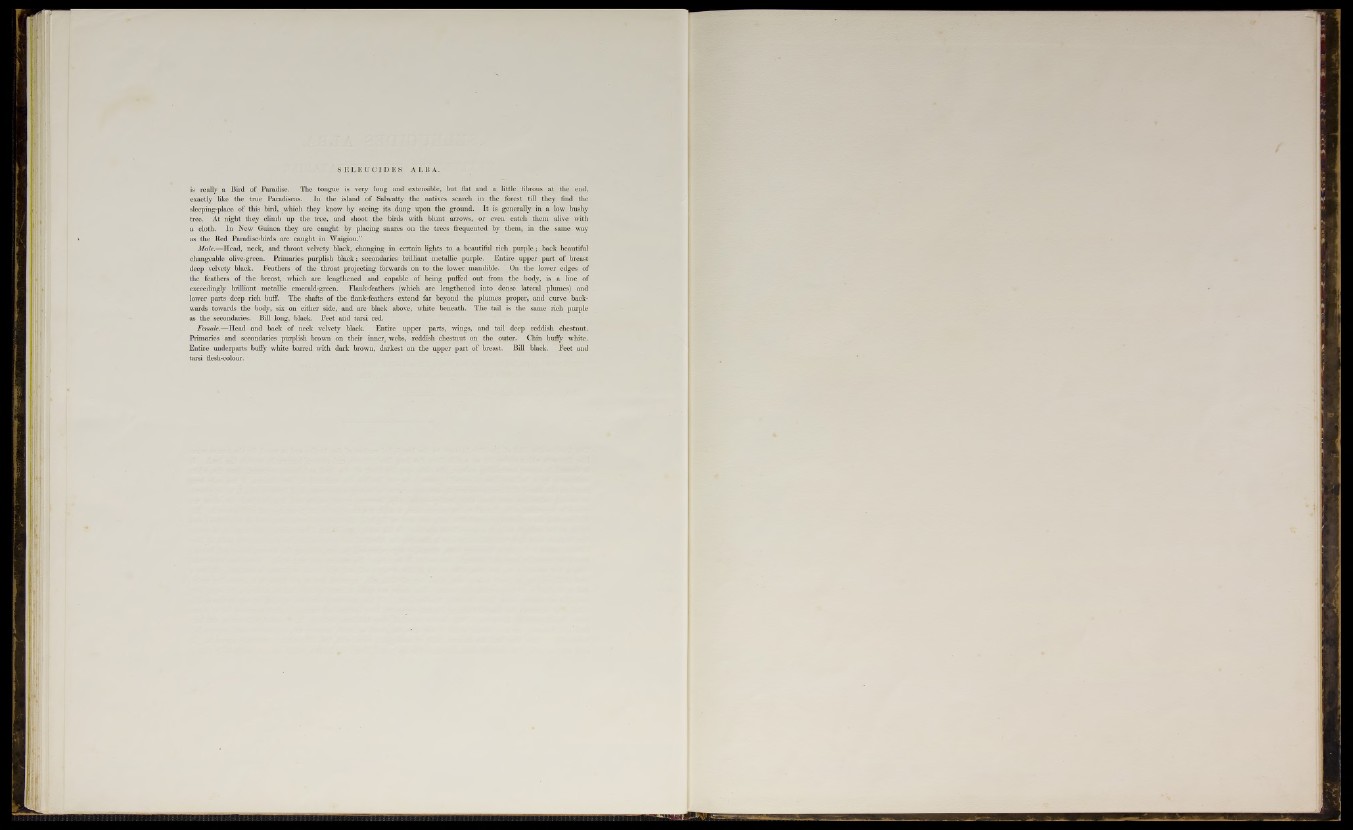
S E L E U C I D E S ALEA.
is really a Bird of Paradise. The tongue is very long and extensible, but flat and a- little fibrous at the end,
exactly like the true Paradiseas. In the island of Salwatty the natives search in the forest till they find the
sleeping-place of this bird, which they know by seeing its dung upon the ground. It is generally in a low bushy
tree. At night they climb up the tree, and shoot the birds with blunt arrows, or even catch them alive with
a cloth. In New Guinea they are caught by placing snar.es on the trees frequented by them, in the same way
as the Bed Paradise-birds are caught in Waigiou.”
Male.—Head, neck, and throat velvety black, changing in certain lights to a beautiful rich purple; back beautiful
changeable olive-green. Primaries purplish black; secondaries brilliant metallic purple. Entire upper part o f breast
deep velvety black. Feathers of the throat projecting forwards on to the lower mandible. On the lower edges of
the feathers o f the breast, which are lengthened and capable of being puffed out from the body, is a line of
exceedingly brilliant metallic emerald-green. Flank-feathers (which are lengthened into dense lateral plumes) and
lower parts deep rich buff. The shafts of the flank-feathers extend far beyond the plumes proper, and curve backwards
towards the body, six on either side, and are black above, white beneath. The tail is the same rich purple
as the secondaries. Bill long, black. Feet and tarsi red.
Female.—Head and back o f neck velvety black. Entire upper parts, wings, and tail deep reddish chestnut.
Primaries and secondaries purplish brown on their inner, webs, reddish chestnut on the outer. Chin bufly white.
Entire underparts bufly white barred with dark brown, darkest on the upper part of breast. Bill black. Feet and
tarsi flesh-colour.